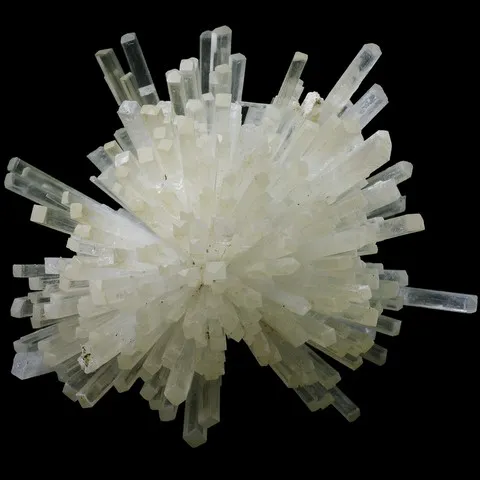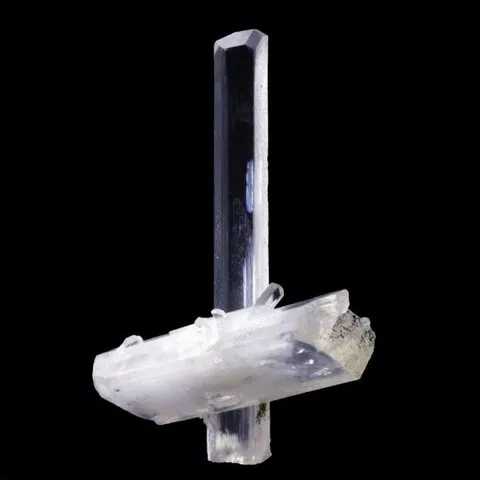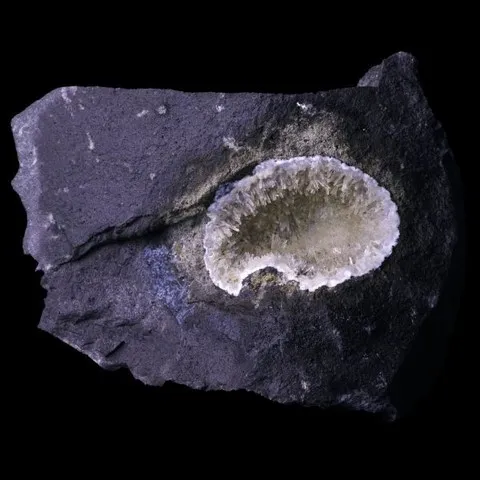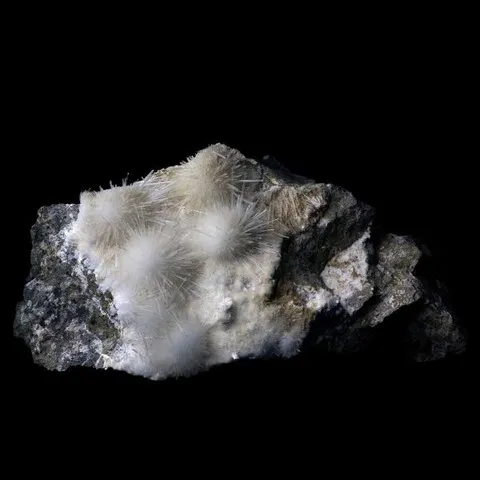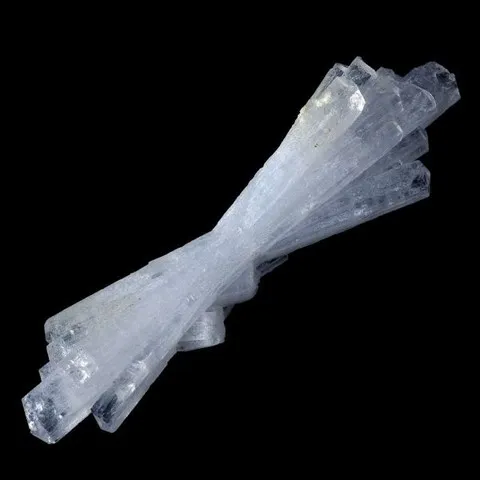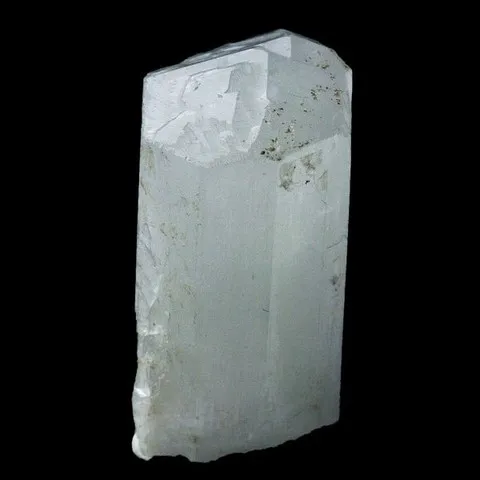NATROLITE
Class : Silicates
Subclass : Tectosilicates
Crystal system : Orthorhombic
Chemistry : Na2Al2Si3O10 . 2H2O
Rarity : Fairly common
Natrolite, also known as mesotype, belongs to the large group of zeolites. Its name come from the sodium that it contains (natrium in Latin). It is generally found in the cavities of the basalts, but also in large crystals in the nepheline syenites (Kola Peninsula, Russia), where it seems to derive from the alteration of nepheline and sodalite. It is also found in small veins in some gneisses and granites. It crystallizes in the form of prisms with square sections that are terminated by a pyramid and generally acicular, forming fibroradiated aggregates. It can also be found in compact and fibrous masses (San Benito, California). Most of the time colorless to white, it can also sometimes be yellowish, greyish or reddish. It is a mineral that is not used in any particular area, specimens are only for collection. It should be noted, however, that there are cabochons of natrolite, potentially it can therefore be cut and used in jewelery, but it is not very interesting.
Natrolite in the World
On the right side a gem crystal from Mont St-Hilaire (Canada) of 3.5 cm.
Natrolite in France
France has pretty deposits that have delivered fine specimens of natrolite. Among the most classical localities we can note the Puy-de-Marmant on the commune of Veyre-Monton, Puy-de-Dome (now classified as a nature reserve), it has provided prisms of more than 2 cm. The basalt quarry of St-Jean-des-Ollières a few kilometers away also occasionally produced beautiful urchins. Finally, in the Aveyron, the basalt quarries of Espalion also produced tassels and spherical centimetric aggregates.
Twinning
Natrolite has several theoretical twinning planes, however it seems that none is expressed by specific crystal shapes.
Fakes and treatments
No fake known for this mineral.
Hardness : 5 to 5,5
Density : 2,20 to 2,26
Fracture : Irregular
Trace : White
TP : Translucent to transparent
IR : 1,473 to 1,496
Biréfringence : 0,012 to 0,013
Optical character : Biaxial +
Pleochroism : None
Fluorescence : Orange, yellow, white
Solubility : Slowly turns into silica gel in hydrochloric acid
Magnetism : None
Radioactivity : None

